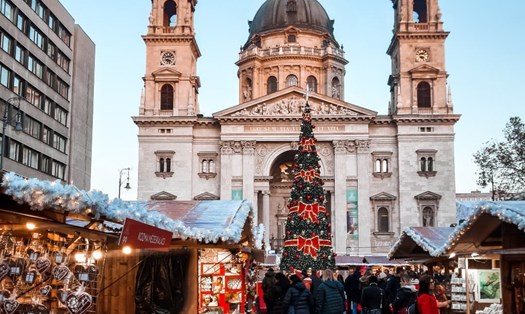Christmas in Russia is celebrated most widely on January 7 because the Russian Communist Church follows the Julian calendar, 13 days later than the Gregorious calendar in Western countries.
Russia often hold two holidays, Christmas and even two New Year's Day holidays. The first Christmas tree falls on December 25 and the second New Year's Eve tree falls on January 14, to coincide with the Gregorious calendar. Therefore, for a whole month, people will see Christmas trees, New Year symbols decorated on the streets and public places of Moscow.
According to Polish customs, in Russia, people will spread floors and tables with dry grass to symbolize the grass of the Hereafter. Then, a white tablecloth was spread out to symbolize the scarf wrapped around Jesus. During the holiday, Russiaans can also fast until the first star appears in the sky on Christmas Eve.
Christmas Eve meals in Russia are usually meatless and include 12 dishes to symbolize the 12 messengers. Lentil bread soaked in honey and garlic is shared by all family members at this meal.
Kutya is a mixture of cereals and Anhong nuts sweetened with honey. It is served as one of the main dishes of the Christmas party. Vegetarian (or solyanka) draft stews can also be filled with lettuce, corn and cabbage, dried fruits, potatoes and beans.
Christmas meals can also include pork, pork or another meat dish. At that time, people will eat with side dishes such as aspic, banh to and desserts in many different forms.
The Russian Santa Claus is ded Moroz, or Father Frost. On New Year's Eve, he gave gifts to children under the New Year's pine tree (unlike the Christmas tree). Snegurochka - a snow girl who is said to be ded Moroz's niece will go with ded Moroz.
Unlike Santa always sees, ded Moroz is tall and thin. Instead of traveling by slide, ded Moroz travels around Russia by troika, a vehicle led by three horses.



